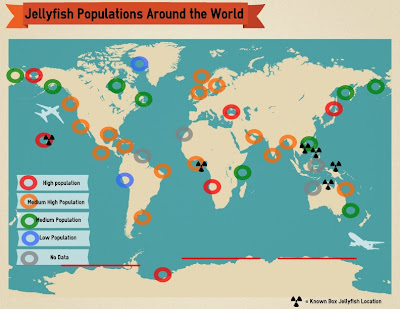Want to help make a difference? Get involved!
Help Educate:
Request a Jellyfish Project Presentation in your school! Helping the oceans to keep clean by educating will help. One of the causes of jellyfish populations booming is the shifting ocean conditions. The ocean is becoming warmer, a better environment for jellyfish to thrive. Pollution is also giving more surfaces for jellyfish to lay their eggs. Maintaining a clean environment and oceans is one way to help.¹
Volunteer:
Organizations such as the Pacific Cnidaria Research Lab are looking for volunteers! The volunteering may include collecting jellies washed up on shore, a great experience. Search for a local research lab to help out!
Contribute to Jellyfish Projects Around the World:
All around the world scientists are conducting research, tagging Jellyfish and tracking them. The more we know, the more prepared we will be. Check out this List of Jellyfish Projects Around the World.
Stop Overfishing (Spread the Word):
Another way to get involved other than with the ocean and direct jellyfish research projects, is to help stop overfishing by spreading the word. Overfishing is killing off fish populations, causing a decline in the fishing and job industry. When fish no longer inhabit niches of a certain area, jellyfish are capable of moving in and using those niches to lay more eggs. ²
Fun Activity:
Here's a fun activity for your young one. You put a plastic bag that resembled a jellyfish into a water bottle and watch it come to life as you shake the water bottle! It is the Plastic Bag Jellyfish.
---------------------------------------------------------------------------
Resources:
¹ Jellywatch by the Monterey Bay Aquarium
² A Jellyfish Sandwich? No Thanks! Stopping Overfiishing to Prevent the End of Fish by Libby Fetherston
Resources:
¹ Jellywatch by the Monterey Bay Aquarium
² A Jellyfish Sandwich? No Thanks! Stopping Overfiishing to Prevent the End of Fish by Libby Fetherston
